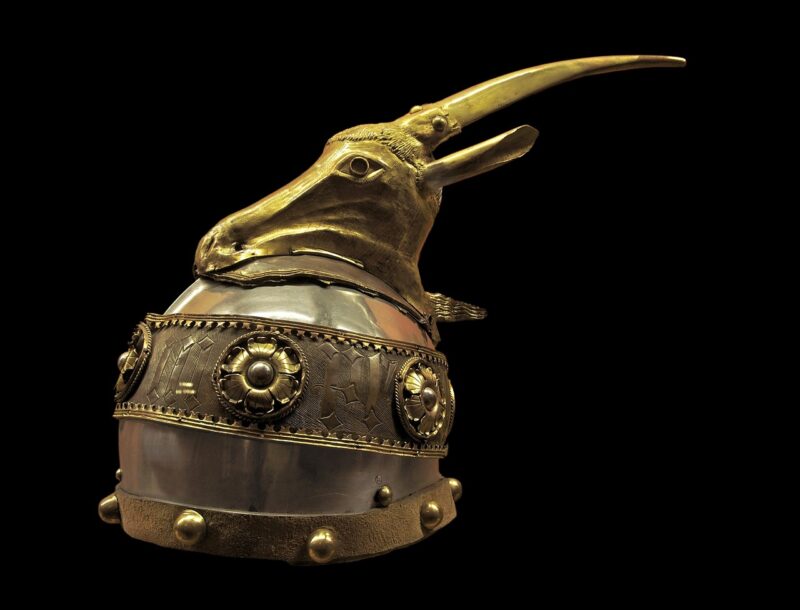Hidden Histories: The Fascinating Facts You Never Learned in School
November 18, 2024

History is often seen as a collection of dates, events, and prominent figures—what we learn in school rarely scratches the surface of the nuanced and multifaceted past that shapes our present. From ancient civilizations to modern societal movements, countless intriguing stories and factual disclosures are lost in textbooks, leaving a gap in our understanding of human development. In this article, we will explore lesser-known historical facts that can radically shift our perception of traditional narratives.
1. The True Origins of Popular Cultural Symbols
You may recognize the popular image of Santa Claus as a jolly figure in a red suit, but how many people are aware that his origins can be traced back to a Christian bishop named St. Nicholas? Born in the 3rd century in what is now Turkey, St. Nicholas was known for his generosity and love for children. His legacy turned into the modern-day Santa Claus through the merging of folklore, cultural customs, and commercial interests over centuries.
Additionally, the pumpkin with a carved face we associate with Halloween originates from an Irish myth about a man named Stingy Jack who tricked the devil. After his death, Jack was denied entry to both heaven and hell and roamed the earth with only a coal to light his way, hiding it inside a hollowed-out turnip. Now, people around the world celebrate this festival with pumpkins, but the true roots of those traditions are often overlooked.
2. The Suffragette Movement: A Diverse Ensemble
When discussing the suffragette movement of the early 20th century, many likely think of key figures such as Susan B. Anthony or Emmeline Pankhurst. However, the movement was far more diverse than often portrayed, incorporating a vast array of women and men worldwide, many of whom remain unsung heroes.
Women from different backgrounds played vital roles in the suffrage movement, including African American activists like Ida B. Wells who highlighted the intersection of race and women’s rights, and indigenous rights advocates like Wilma Mankiller, who fought not only for women’s suffrage but also against the systemic oppression of Native Americans. Without acknowledging this diversity, we risk losing the complete narrative of the fight for women’s rights.
3. The Great Emu War of Australia
In 1932, Australia faced an unexpected enemy: emus. After World War I, returned soldiers were given land to farm, but the emus invaded these farmlands in droves, destroying crops and wreaking havoc. In an attempt to mitigate the problem, the Australian government declared war on the emus—dubbed “The Great Emu War”—utilizing soldiers armed with machine guns.
What resulted? The emus proved to be surprisingly adept at outsmarting the military efforts; they scattered quickly, and the campaign was deemed a failure. This bizarre episode serves as a humorous yet poignant reminder of humanity’s often misguided attempts to control nature.
4. Medicine’s Overlooked Figures
In the study of medicine and public health, many famous names spring to mind, such as Florence Nightingale or Hippocrates. However, the contributions of women and minorities in medical history are often erased or much less reported. Take, for instance, James McCune Smith, the first African American to earn a medical degree in the United States in the 1830s. Smith not only practiced medicine but also wrote extensively against racism, contributing immensely to social justice discussions.
Similarly, Elizabeth Blackwell was the first woman to receive a medical degree in the United States in 1849, breaking barriers and establishing paths for women in the medical profession. These figures exemplify the critical roles individuals have played in shaping modern medicine but whose stories and contributions are often overshadowed by their male counterparts.
5. The Influence of Indigenous Knowledge Systems
When discussing advancements in agriculture, engineering, and social structures, we must consider the integral role indigenous cultures have played in shaping sustainable practices that predate modern society’s strategies. For instance, the “Three Sisters” farming method of the Iroquois involved planting corn, beans, and squash together, creating a mutually beneficial system that has been proven sustainable for thousands of years.
Moreover, indigenous knowledge systems emphasize conservation, biodiversity, and community engagement, concepts that contemporary environmental movements strive to integrate into modern practices. Recognizing these contributions is vital, as they offer insights into how we can harmonize modern life with nature.
6. The Role of Women in Science
Although history often spotlights men in scientific fields, it is imperative to acknowledge the significant contributions of women. Consider the work of Marie Curie, the first woman to win a Nobel Prize, who conducted groundbreaking research in radioactivity. Likewise, Ada Lovelace, considered the first computer programmer, laid the foundation for future advancements in computing long before the modern computer was invented.
Even today, women scientists often remain unrecognized for their achievements, which impacts funding, research opportunities, and mentorship for future generations. Reassessing the contributions of women throughout history is necessary for creating a more inclusive narrative.
7. The Impact of Smallpox on Native Populations
The history of colonization is often marked by conquest and battles, but one of the most devastating impacts on indigenous populations was inflicted not through weaponry, but through diseases like smallpox. Upon contact with European settlers, Native American populations were exposed to new diseases that decimated communities, with estimates suggesting that up to 90% of some tribes perished due to smallpox. The impact of disease on the social fabric of these cultures is often overlooked in traditional narratives, focusing instead on battlefield strategies and territorial gains.
Understanding these nuances is essential to adequately grasp the true historical consequences of colonization and settlement. By uncovering these hidden histories, we can better understand the complexities of human interactions across time.
Conclusion
By shedding light on these overlooked aspects of history, we enrich our understanding of the past and the complexity of human experiences. Learning and teaching the complete historical narrative—one that embraces diverse voices and contributions—does not merely serve educational purposes; it enables us to forge connections with our collective heritage while progressing toward a more inclusive future. As we strive to understand where we come from, we can better navigate the path ahead, recognizing the lessons learned from our histories and their impacts on contemporary society.
The stories we’ve encountered reflect the profound impact of forgotten histories, giving us insight into how interconnected our narratives are across time and cultures. These fascinating facts serve as a reminder to embrace the fuller picture of history and to continuously seek knowledge that challenges traditional narratives.








